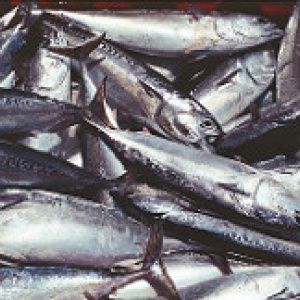
This systematic review considers how seafood is currently incorporated and assessed in the sustainable diets literature and examines the barriers to more adequate inclusion of seafood within research on sustainable diets.
The authors mention that dietary recommendations for fish intake have often been described as the number one conflict between health and environmental sustainability. They call for more nuance in this area and argue that seafood - fish and invertebrates from wild-capture fisheries and aquaculture - is an important part of the food system and deserves a larger role in the wider debate on food security and food systems research.
The review first identified all studies published in the past 10 years related to sustainable diets (n=878), of which 504 mentioned seafood, fish, shellfish or aquatic products. After excluding those studies which did not include seafood as an identifiable part of either an actual or modelled diet, or which only made reference to seafood or fish briefly in the text, 47 studies remained; these publications were identified for inclusion in the review.
A key finding of the review was that many studies on the environmental impacts of dietary change did a) not include seafood or b) or if they did, they were not transparent in their data sources. In addition, large variation within the seafood category or seafood-specific impacts were often ignored. For example, the distinction between wild-caught or aquaculture-grown seafood, with their greatly differing environmental impacts, is rarely marked in the sustainable diets literature.
The authors also emphasise the importance of research on sustainable diets identifying the most efficient and least environmentally damaging products within the seafood category (as within all food categories), something that is not currently done. Examples of potentially less environmentally damaging seafoods are small pelagic species such as Peruvian anchovy or filter-feeders such as mussels or oysters. The former are rich in omega-3 oils, have lower GHG equivalent emissions, and their stocks are well-managed; yet anchovy are arguably currently underutilised for direct human consumption.
As to barriers and opportunities to incorporating seafood into sustainable diet research, some of the authors' key points were:
- Studies were limited by models that did not adequately address biological issues, such as the biotic impacts of fisheries. The under-representation of biological impacts, which are key components of sustainable diets, is not restricted to seafood and has been found across the sustainable diet literature.
- Modelling of fishing impacts on stocks and marine ecosystems has advanced in recent years, with several marine biotic resource use metrics under development for use in seafood LCAs.
- The sustainable diet literature has failed to keep apace of these developments.
- Better inclusion of data on the environmental performance of seafood products in LCA databases and new methods allowing for comparisons across production systems are needed to identify diets to meet current and future demand for food with the least environmental impact.
From the conclusion of the paper:
‘The supply of seafood from wild-capture fisheries and aquaculture faces many challenges, as do other food sectors, in order to be considered sustainable. Seafood can provide more sustainable food options than livestock, and in some cases crops, and failing to adequately include seafood in food sustainability, security and nutrition debate risks the promotion of potentially less sustainable and less healthy dietary choices.’
Abstract
The literature on sustainable diets is broad in its scope, and application yet is consistently supportive of a move away from animal-based diets towards more plant-based diets. The positioning of seafood within the sustainable diet literature is less clear. A literature review was conducted to examine how the environmental impacts of seafood consumption are assessed and what conclusions are being drawn about the inclusion of seafood in a sustainable diet. Seafood is an essential part of the global food system but is not adequately addressed in most of the sustainable diet literature. Aquaculture, the world's fastest growing food sector, was considered by very few papers. Seafood consumption was commonly presented as a dilemma due to the perceived trade-offs between positive health outcomes from eating seafood and concerns of overfishing. A number of studies included seafood as part of their sustainable diet scenario, or as part of a diet that had lower impacts than current consumption. Most of the indicators used were biophysical, with a strong focus on greenhouse gas emissions, and very few studies addressed biological or ecological impacts. The assessment of seafood was limited in many studies due to relevant data sets not being incorporated into the models used. Where they were used, data sources and methodological choices were often not stated thereby limiting the transparency of many studies. Both farmed and wild-capture production methods need to be integrated into research on the impacts of diets and future food scenarios to better understand and promote the benefits of sustainable diets.
Reference
Farmery, A.K., Gardner, C., Jennings, S., Green, B.S. and Watson, R.A., 2017. Assessing the inclusion of seafood in the sustainable diet literature. Fish and Fisheries.
You can read the full paper here (paywall).







Post a new comment »